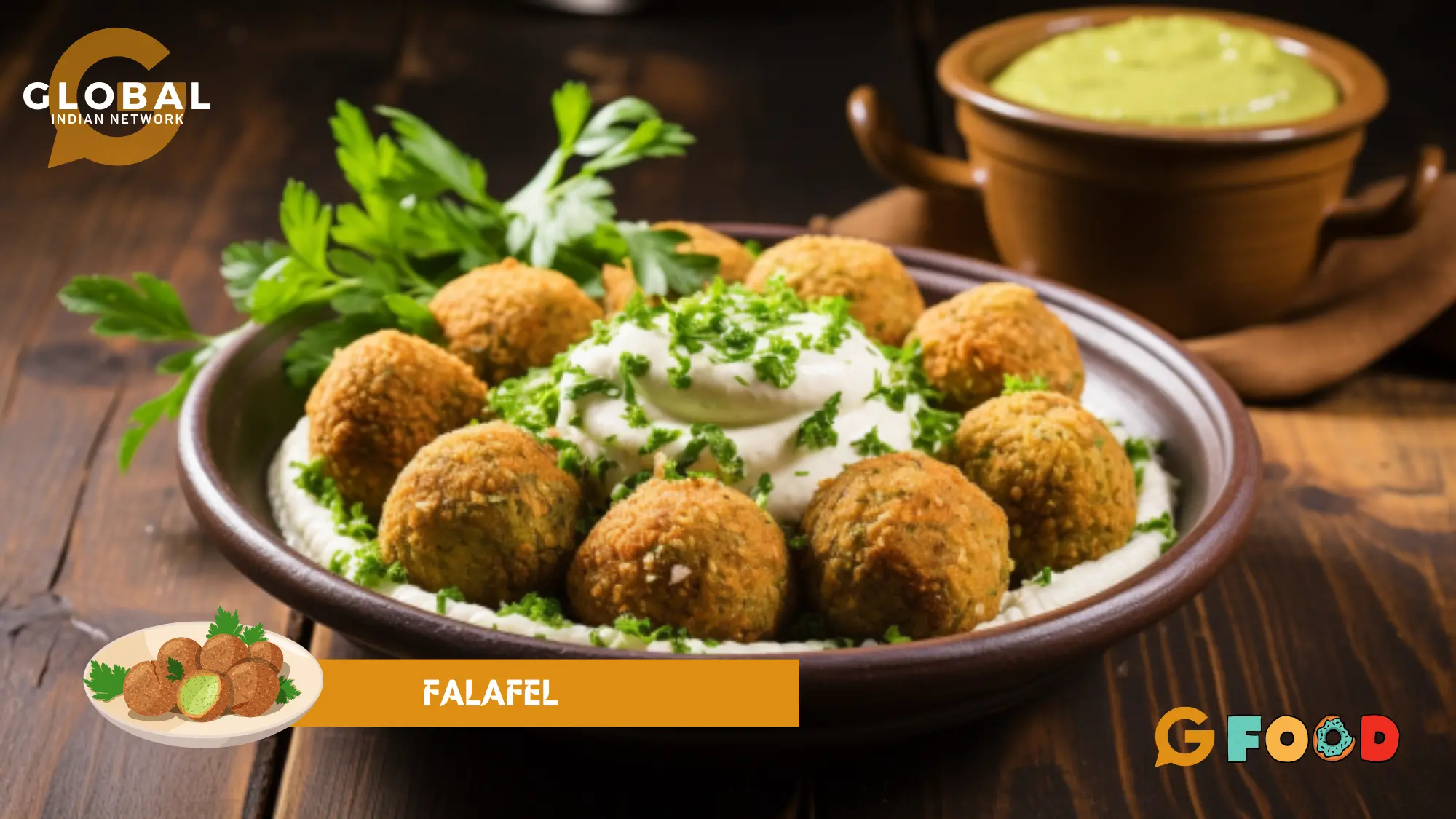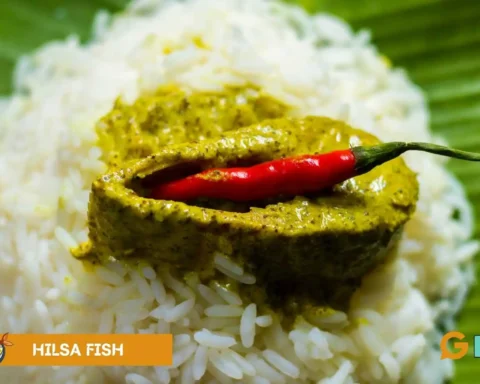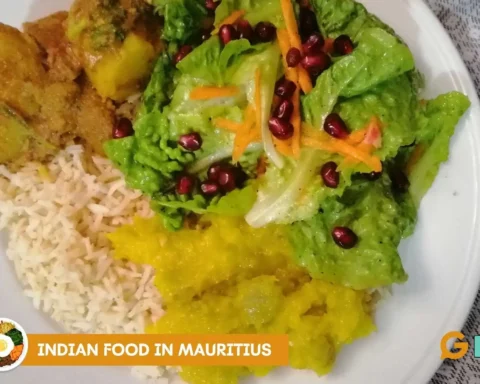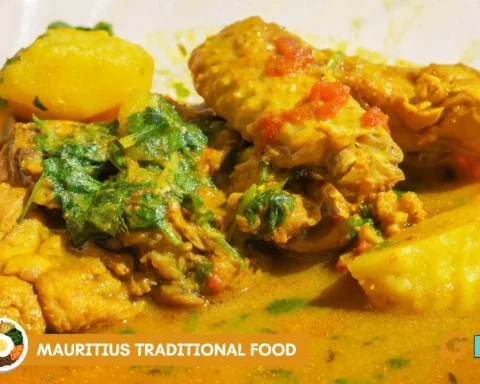Has the question ever crossed your mind: What is Falafel? Discover the delectable world of falafel, a cherished culinary delight with Middle Eastern origins. Whether you’re a seasoned food enthusiast or a curious beginner, exploring the essence of falafel promises a savory adventure that tantalizes the taste buds. Get ready to embark on a gastronomic journey that combines tradition and innovation in every bite.
Uncover the secrets of making the perfect falafel in this comprehensive guide. From its rich history to the essential ingredients and step-by-step cooking method, explore the world of falafel like never before. Delight your senses with crispy chickpea goodness!
Table of Contents
Etymology
The term falāfil originates from Arabic, which translates to ‘pepper’. This word is borrowed from the Persian felfel and shares a connection with Sanskrit’s pippali, signifying ‘long pepper’. Alternatively, it might have evolved from an earlier filfal, derived from palpēl, conveying ’roundness’ or ‘rolling’.
This globally recognized term, falāfil, has made its mark worldwide. Recorded for the first time in 1936 within the English language, it has manifested in variations such as falafel, felafel, filafel, and filafil.
In certain regions like Egypt and Sudan, falafel is referred to as taʿmiya. This name is derived from a diminutive adaptation of the Arabic word, which translates to “food”.
The term falafel encompasses the fritters and sandwiches stuffed with these flavorful creations.
History
The enigmatic origins of falafel have sparked debates and discussions among food enthusiasts and historians alike. While the true birthplace of this beloved dish remains uncertain, one prevailing theory points towards the vibrant land of Egypt.
A captivating legend traces back to the Roman era, where it is believed that Coptic Christians indulged in a version of falafel crafted from fava beans during the Lenten season of the 4th century.
Yet, the journey of falafel’s history encounters its first written references in 19th-century Egyptian sources. Surprisingly, the use of oil for deep frying, a hallmark of modern falafel preparation, might have been an impractical luxury in the ancient Egyptian era due to its expense.
Given Alexandria’s strategic position as a bustling port city, it became a gateway for exporting both the dish itself and its name to various corners of the Middle East. Some countries even named falafel as their national dish. With time, falafel embarked on a culinary odyssey, journeying northwards to the Levant. It’s in this region that chickpeas took the place of fava beans, redefining the very essence of falafel. From the Levant, the tantalizing aroma and flavour of falafel continued to spread, conquering hearts and palates across different regions of the Middle East.
Falafel Ingredients
Falafel emerges as naturally devoid of gluten, crafted from a handful of uncomplicated elements and a vegan food. Here’s a glimpse into the ingredient list of this recipe:
- Chickpeas (Garbanzo Beans): Opt exclusively for dried and soaked or ground chickpeas, setting aside the notion of employing canned chickpeas. Canned counterparts tend to be excessively tender and moist, leading to an improper formation of your falafel.
- Onion: My preference leans towards yellow onion, lending a slightly more potent flavour, yet the spectrum includes room for white or red onion as viable alternatives.
- Parsley and Cilantro: These two splendid herbs infuse copious amounts of flavour into your falafel, transforming its interior into a radiant shade of green.
- Garlic: Prioritize the inclusion of fresh garlic cloves over the substitution of garlic powder to achieve a more pronounced and robust flavour profile.
- Green Chile Pepper (Serrano Pepper): The introduction of a petite pepper bestows a dash of both flavour and zest, striking an equilibrium that avoids overpowering the falafel. While the intensity can be customized, I recommend a trial before eschewing this element – a leap of faith that proves rewarding.
- Cumin, Cardamom, Salt, and Black Pepper: These aromatic spices, frequently heralded in Middle Eastern culinary practices, confer an earthy, spiced, and assertive essence that will captivate your palate.
- Chickpea Flour: This ingredient performs a dual role, binding the amalgamation while preserving its contour during frying. My inclination leans towards chickpea flour, yet an alternative lies in adopting a gluten-free flour amalgam.
- Baking Soda: A pivotal component responsible for imparting the airy, delicate consistency to the interior texture of the falafel.
- Oil for Frying: Avocado oil is preferred due to its high heat resistance and culinary characteristics. However, the avenue remains open to employ vegetable oil as a viable substitute.
How to Make Falafel: Step-by-Step
Let’s approach this falafel recipe in two distinct stages: the preparation of the dough and, subsequently, the cooking process.
Dough Preparation
Commence by soaking your dried chickpeas. Allow them to submerge overnight or for a minimum of 8-12 hours. It’s imperative to note that the chickpeas will undergo a threefold expansion, necessitating ample water for coverage. Afterwards, drain and thoroughly rinse them.
Assemble all the ingredients in a food processor. Combine the ground chickpeas, onion, parsley, cilantro, garlic, green pepper, and spices within the boundaries of the food processor and pre-chopping the onion, herbs, and pepper to enhance the final result. Initiate pulsing in the food processor, aiming to attain a texture akin to coarse sand while avoiding complete blending.
Transfer the resultant mixture to a receptacle. Next, introduce the chickpea flour and baking soda, ensuring a comprehensive amalgamation. Subsequently, envelop the mixture with plastic wrap or a fitting lid.
Submerge the bowl in the refrigerator on a baking sheet. Allow the falafel mixture to refrigerate for 30 minutes to 1 hour.
Falafel Formation
Proceed to shape your falafel balls. This task can be accomplished manually, employing a cookie scoop or a dedicated falafel scoop. The decision to craft round spheres or flattened patties hinges on your preference.
Cook the falafel balls for 3-5 minutes or until it turns golden brown.
For pan-frying or baking, the flattened shapes prove more advantageous. Nevertheless, both configurations are suitable for deep frying. Shape all your falafel and position them on a plate with paper towels to drain.
Important Tips
For the finest texture and flavour, always go for dried chickpeas soaked in water for 24 hours. The inherent starchiness of dry chickpeas contributes to the structural integrity of your falafels. Utilizing canned chickpeas is discouraged as they tend to break apart when fried.
Allow the falafel mixture to chill: Allotting at least 1 hour of chilling time aids in shaping the falafels. Additionally, you can prepare the falafel mixture the night before and refrigerate it overnight.
Introduce baking powder to the falafel mixture before forming into balls/patties: Incorporating baking powder as a leavening agent lends a fluffier quality to the falafel mix, resulting in a more airy texture.
Employ bubbling oil for frying and maintain spacing: Deep frying remains the preferred method for optimum crispiness. The cooking oil should be heated to a temperature where it gently bubbles. However, it’s essential not to overcrowd the frying pan to prevent disintegration. A deep-fry thermometer can be used; the ideal reading should hover around 375 degrees F (for a stove, this corresponds to medium-high heat).
Achieve the desired finish: The falafel balls should display a crisp, medium-brown exterior while retaining a fluffy and light green interior once cooked.
Some Variants of Falafel
Although the fundamental falafel boasts a robust flavour profile, there’s room for experimentation and novelty. Consider venturing into the realm of a falafel burger, wherein a generously proportioned patty takes centre stage, nestled within a bun, and adorned with an array of your preferred toppings.
Alternatively, venture off the beaten path by employing a waffle iron to forge savoury falafel waffles, ready to be paired with delicately sliced vegetables and drizzled with the richness of tahini sauce. If health-consciousness is on your radar, sidestep the deep frying routine and embark on the path of baked falafel, a leaner variation that offers a low-fat alternative to the traditional approach.
What to Serve with Falafel?
Falafel lends itself to an array of delightful serving styles. Among these, the falafel pita sandwich stands as a beloved choice. In this rendition, a pita pocket is “sandwich bread,” embracing the fritters. Within this pocket, a harmonious medley of hummus and salad-like complements intermingle, crafting a delectable falafel pita experience.
Furthermore, dining establishments frequently grace their offerings with these fried vegan delights, accompanied by hummus and the velvety embrace of tahini sauce—a presentation fondly referred to as a “falafel plate.” Additionally, the culinary canvas expands with the introduction of toum, a sumptuously thick Middle Eastern garlic sauce, further enhancing the gustatory journey.
Conclusion
In conclusion, now that you are familiar with what is falafel, the versatile world of falafel unfolds with a delightful array of possibilities. From its humble beginnings of chickpeas and spices, falafel has emerged as a culinary masterpiece that invites creativity and experimentation. The journey from its inception in the food processor to the final crispy, flavorful bites is a testament to the magic that can be conjured in the kitchen. So, whether savouring the traditional rendition or embarking on innovative adaptations, falafel remains a timeless and cherished delight for food enthusiasts around the globe.
FAQs
Is falafel a veg or non veg?
It is vegan.
Is falafel Indian or Greek?
Most of the theories agree that Falafel was developed in Egypt.
What are the types of Falafel?
There are three types of falafel–Traditional falafel, baked falafel and lemon falafe.
Is falafel made from chickpea?
Falafel is made from chickpeas and/or fava beans.









